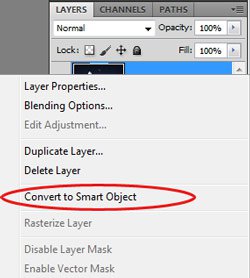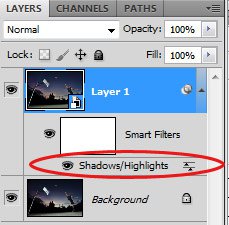Smart objects were introduced for the first time in Photoshop CS2. It is a great feature and once you start using it, there is no going back.The great thing about smart objects is that they preserve the original data of the layer and you’re able to perform non-destructive changes to that layer at any stage of your edit. you’re able to also convert filters into smart objects and in the same way you will be able to adjust any of the filter’s parameters at any stage of your edit.Let’s say you are putting together a digital composite, you have imported an image, re-sized it, and at some point you realize it’s crucial that you enlarge it. If you enlarge a regular layer, there will be quality degradation, but if you have smartly converted it in to a smart layer before that, enlarging it wouldn’t be a problem. Since the smart object retains all original data.By clicking on the smart object, Photoshop will initiate the image(vector or graphic) in a new tab so you’re able to perform a whole new set of edits. Once you save it, all the changes will be automatically applied to the smart object layer… isn’t that great?Now, converting a layer or a filter to a smart object is not hard at all. Just got to the Filter menu and select Filter»Convert for Smart Filters. you’re able to also Right-punch the layer and select Convert to Smart Object, from the drop down menu. after you grab converted your layer into a smart object you’re able to apply all kinds of filters, including the Shadow/Highlights adjustment( found under Image»Adjustments). you’re able to also re-size, free transform, or do anything else you want to the image. Every time you apply a filter to your new smart object layer, it is going to appear in the layers tab as a "sub-layer" to your smart object. You also conveniently get a mask automatically added to your filter, so you’re able to apply this filter to specific areas of the image. As we mentioned earlier, at any stage of the edit you’re able to punch the filter name, located underneath your smart object and adjust the parameters.If you decide to make changes to the overall appearance of the smart object, double-poke the layer icon and photoshop is going to load your smart object into a new document. In this new document you’re able to apply any additional changes that you may need to do and then hit Save. Once the document is saved, all the changes will be automatically applied to your smart object layer.We would recommend that you get used to using smart objects, and as you are getting better and better at photoshop, your edits will start getting more and more complicated. Making Smart Objects part of your workflow now, will make your edits 100x smoother in the future. The last thing you want when you are working on an important image for a client is to find out that it’s crucial that you change something that you made in the beginning of your edit, but your layer is not a smart object. Then you have to delete all the layers stacked on top and start form the beginning. What if you have 30 layers on top, which is not uncommon for important projects?
!






